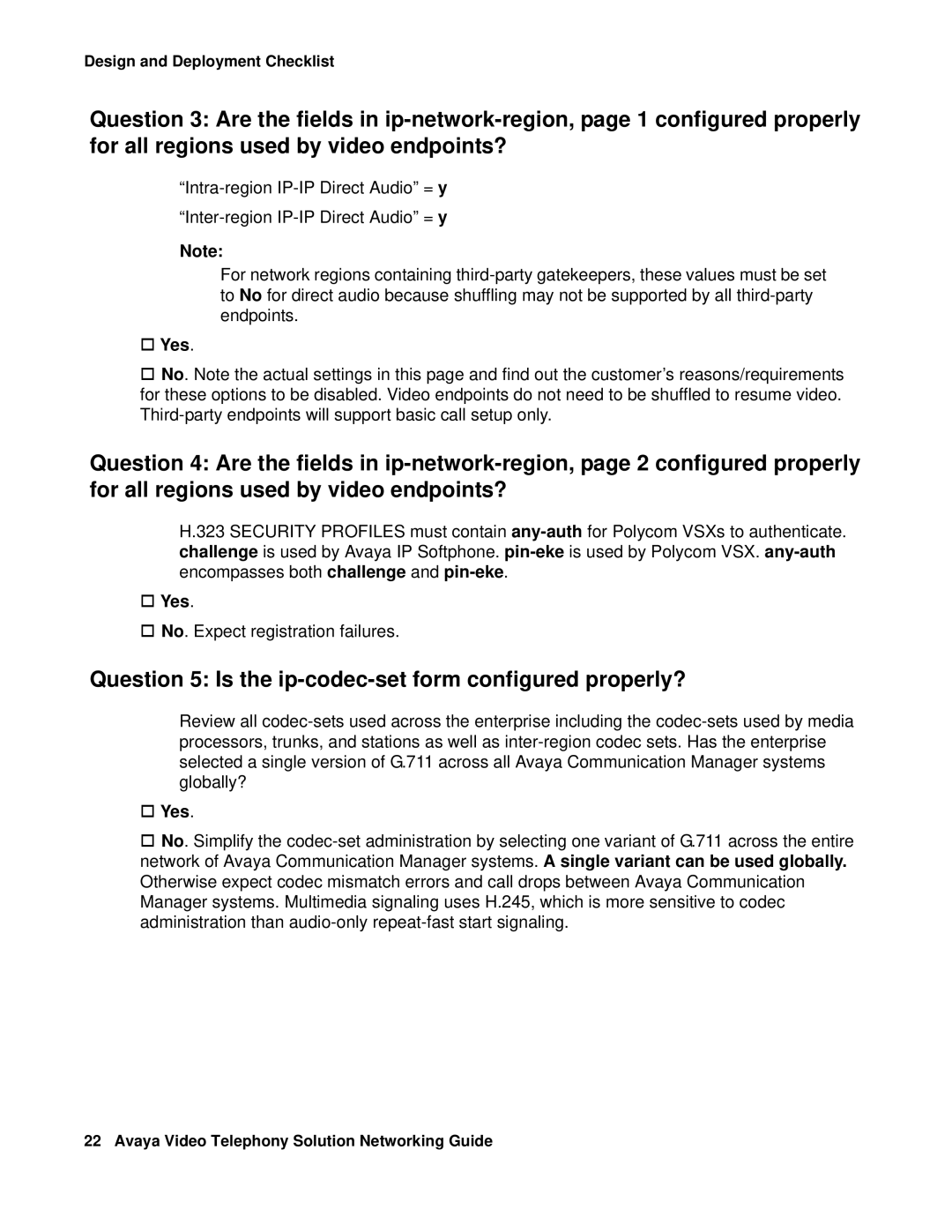Design and Deployment Checklist
Question 3: Are the fields in ip-network-region, page 1 configured properly for all regions used by video endpoints?
“Intra-region IP-IP Direct Audio” = y
“Inter-region IP-IP Direct Audio” = y
Note:
For network regions containing third-party gatekeepers, these values must be set to No for direct audio because shuffling may not be supported by all third-party endpoints.
Yes.
No. Note the actual settings in this page and find out the customer’s reasons/requirements for these options to be disabled. Video endpoints do not need to be shuffled to resume video. Third-party endpoints will support basic call setup only.
Question 4: Are the fields in ip-network-region, page 2 configured properly for all regions used by video endpoints?
H.323 SECURITY PROFILES must contain any-auth challenge is used by Avaya IP Softphone. pin-ekeis encompasses both challenge and pin-eke.
Yes.
No. Expect registration failures.
for Polycom VSXs to authenticate. used by Polycom VSX. any-auth
Question 5: Is the ip-codec-set form configured properly?
Review all codec-sets used across the enterprise including the codec-sets used by media processors, trunks, and stations as well as inter-region codec sets. Has the enterprise selected a single version of G.711 across all Avaya Communication Manager systems globally?
Yes.
No. Simplify the codec-set administration by selecting one variant of G.711 across the entire network of Avaya Communication Manager systems. A single variant can be used globally. Otherwise expect codec mismatch errors and call drops between Avaya Communication Manager systems. Multimedia signaling uses H.245, which is more sensitive to codec administration than audio-only repeat-fast start signaling.
22 Avaya Video Telephony Solution Networking Guide
